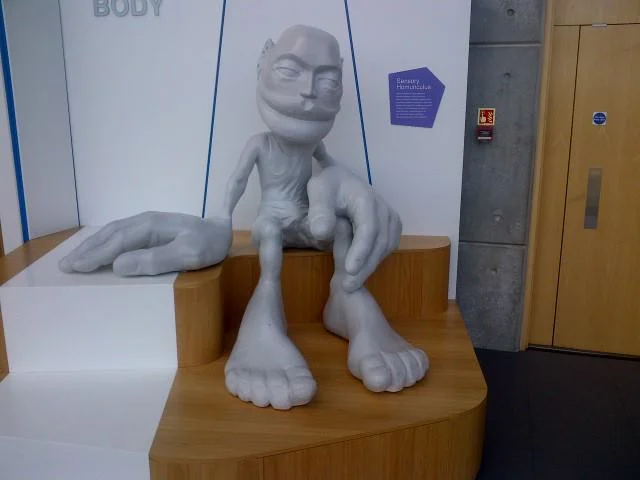Proprioception trumps Biomechanics
As I sit here on a rare Friday afternoon, not working (OK, I am writing this, so sort of working) and looking out at the lake (picture above), while on a family camping trip, I think about a walk on the rocks this morning with my kids. I was watching my very skilled 7 year old jump from rock to rock while my 3 ½ year old, that thinks he is seven, tried to follow his older brother.
I had my foot on a rock which lowered the front of my foot in plantar flexion and stood on that leg. I noticed that my balance was not as great as it was when my foot was in dorsiflexion. This made me think about pronation and supination. Yes, it is not uncommon for me to think about such things, especially when I have some spare time. That is one of the things about being a foot and gait nerd; these sorts of things are always on our minds.
So, why was my balance off? Did I need more proprioceptive work? Were my foot intrinsics having issues? No, it was something much more mundane.
Pronation consists of dorsiflexion, eversion and abduction. This places the foot in a “mobile adaptor” posture, reminiscent of our hunter/gatherer ancestors, who needed to adapt to uneven surfaces while walking over terra firma barefoot. Supination, on the other hand (which is the position my foot was in), consists of plantarflexion, inversion and adduction. It places the foot (particularly the midtarsals) in a locked position for propulsion (think of the foot position during toe off).
So why when my foot was plantar flexed and adducted while standing on this rock so much more unstable in this supposedly more stable, supinated position? I would encourage you, at this point, to try this so you can see what I mean. When I placed my foot in dorsiflexion on the rock, I was much more stable. A most interesting conundrum for a biomechanist.
Experimenting for a few minutes, alternating plantar flexion and dorsi flexion, gave me the answer. When we are walking on the flats, our foot is (usually) not pushed to the extremes of dorsiflexion; with the front of the foot up on a rock, it is much more so. This “extra” upward force on the front of the foot, provides much more sensory input (and thus proprioception) from the ball of the feet. Take a look at the sensory homunculus and you can see how much brain real estate is dedicated to your foot, especially the front portion. With this information, we are able to apply more force through the posterior compartment of the leg,which is stronger than my anterior compartment (as it is with most folks).
When the front of your foot is in plantar flexion (ie, your heel is on the rock), we have less sensory input to the balls of the feet, and rely more on the anterior compartment (weaker in many folks, including myself) to counterbalance the weight of our body.
Mystery solved: proprioception trumps biomechanics; more proof that the brain is smarter than we are.
The Gait Guys. Solving the worlds great gait questions, one at a time.

















